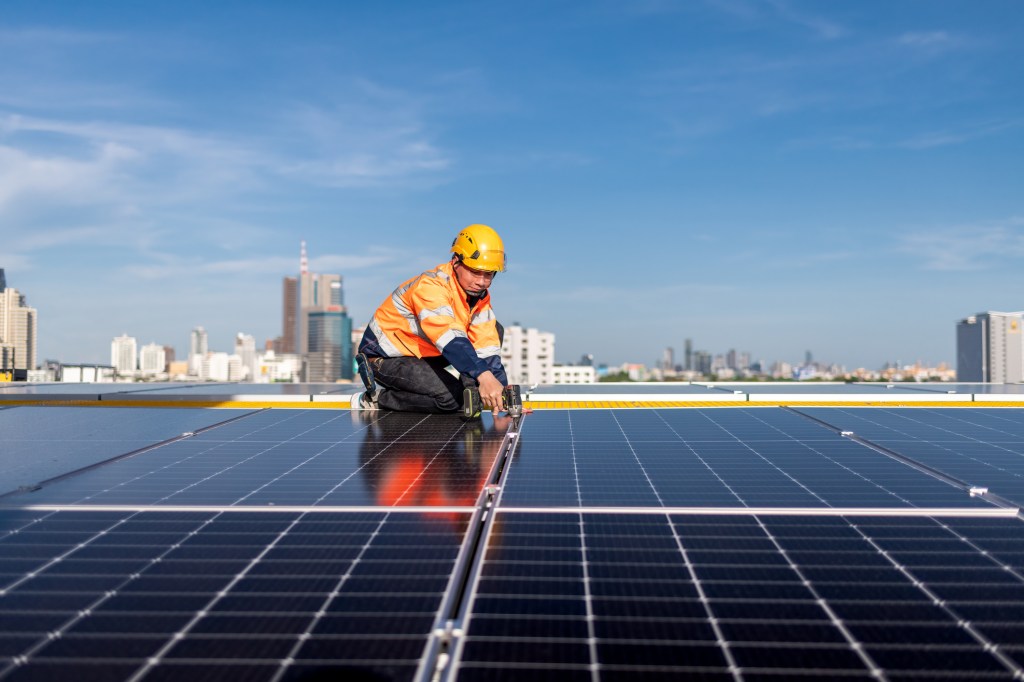Southeast Asia is heating up — not just from climate change but from a buzzing clean-energy scene.
More startups are emerging to tackle environmental issues head-on, and investors are taking notice.
Recent funding activity includes Indonesian rooftop solar star Xurya, which secured $55 million in July last year, while Singapore’s Cyan Renewables raised $50 million in October.
Dedicated funds have also been created to invest in this space.
Venture-capital firm Intudo Ventures, for instance, has earmarked $50 million for renewables as part of a recent $125 million raise. Singapore-headquartered VC firm Trirec had the first close of its $100 million fund in September, Justin Lee, the firm’s investment principal, tells MONIIFY.
And then there’s blended finance, which cobbles together public, private and philanthropy money to bankroll climate projects, especially those that aren’t instant cash cows. For example, Australia recently announced a $50-million investment in a Singapore initiative to finance green projects across Asia.
Read more: Is investing in Southeast Asia’s durians a thorny play?
The play
For retail investors, there are several ways to participate in this clean-energy movement. Green bonds and mutual funds targeting renewable projects offer a relatively low-risk option.
Crowdfunding platforms can be an option too, as they open “doors to renewable energy projects with potentially higher returns,” Roshan Raj, a partner at Redseer, tells MONIIFY.
Clean-energy ETFs are also gaining traction as the sector matures. However, many ETFs still include companies that are not fully carbon-neutral, such as Apple (which aims to be by 2030).
“Positive additions like Tesla and Vestas balance this out,” says Trirec’s Lee.
Traditional energy companies transitioning to renewables are another investment avenue. Indonesia’s Indika Energy, which started out as a coal-mining company, is collaborating with impact-focused VCs to develop solar, battery storage, and EV solutions. Similarly, TBS Energi Utama is pivoting from coal and thermal power to cleaner-energy initiatives.
Over the past six months, Indika’s share price has risen 15.26%, while TBS has surged nearly 89%, reflecting growing investor confidence in these transitions.
Renewable investments in the region are projected to surpass $76 billion between 2023 and 2025, and hit $119 billion by 2027, driven by solar, wind, and geothermal, according to Rystad Energy.
Read more: How to navigate Southeast Asia’s tech jobs downturn
Not always smooth sailing
And while solar energy continues to lead the region’s clean-energy revolution, underutilized technologies like nuclear and geothermal could play a larger role, especially in the next five years, Lee says.
For instance, Singapore is exploring nuclear energy as a potential low-carbon power alternative by 2050. Geothermal energy, on the other hand, offers more immediate potential in resource-rich countries like Indonesia, making it a viable option for near-term deployment.
The opportunities are vast. But so are the challenges.
Bain & Company warned in April that Southeast Asia is lagging on green investments and emission reduction targets, and requires new policies and financial mechanisms to bridge the gap.
Redseer’s Raj says that inconsistent policies and unclear regulatory frameworks across Asean countries hinder regional expansion and investment.
“There’s a need for collaboration and harmonized renewable energy policies to foster a more predictable and investor-friendly environment,” he says.
Read more: A tech winter? Not in tropical Indonesia, says VC firm East Ventures
Also, financing clean-energy projects in Southeast Asia comes at higher costs than in developed economies, raising investment risks, Raj says. Developing innovative financial instruments and mechanisms can reduce these costs and attract private investment.
Another hurdle is profitability. Many clean tech startups remain far from breaking even, with some still in a pre-revenue phase.
“This makes it difficult to secure ongoing investor support, as these startups often lack the traction needed to advance to the next stage,” says Trirec’s Lee.
Blueprint
For founders, overcoming these hurdles requires strategic navigation. Lee suggests they:
- Iterate swiftly. Prepare for multiple rounds of refinement to achieve a market-ready solution.
- Target strategic investors. Finding the right stakeholders who can provide both funding and early contracts to validate concepts and generate revenue.
- Stay realistic about valuations. Unlike software, clean tech doesn’t scale as rapidly. Focus on proving viability and securing sustainable funding, even with modest valuations.
Edited by Victor Loh and Azar Zaidi. If you have any tips, ideas or feedback, please get in touch: talk-to-us@moniify.com






